#Anna Hatun
Explore tagged Tumblr posts
Text




This red and golden dress and kaftan were first worn by Mihrimah Sultan in the thirty-third episode of the second season of Magnificent Century. Both were worn again by Mihrimah's daughter Hümaşah Sultan in the fourth episode of the fourth season. Anna Hatun only wore the dress in the thirty-first episode of the same season.
Both dress and kaftan appears again on Gevherhan Sultan in the thirtieth episode of the first season of Magnificent Century: Kösem.
#Magnificent Century#Magnificent Century Kösem#Magnificent Century Kosem#Muhteşem Yüzyıl#Muhteşem Yüzyıl: Kösem#period drama#costume drama#historical drama#Mihrimah Sultan#Mihrimah Sultan (Daughter of Hürrem)#Hümaşah Sultan#Humasah Sultan#Ayşe Hümaşah Sultan#Hümaşah Sultan (Daughter of Mihrimah)#Ayşe Hümaşah Sultan (Daughter of Mihrimah)#Ayse Humasah Sultan#Anna Hatun#Gevherhan Sultan#Gevherhan Sultan (Daughter of Kösem)#recycled costumes#reused costumes
18 notes
·
View notes
Text
THE SINS OF DESPINA HATUN
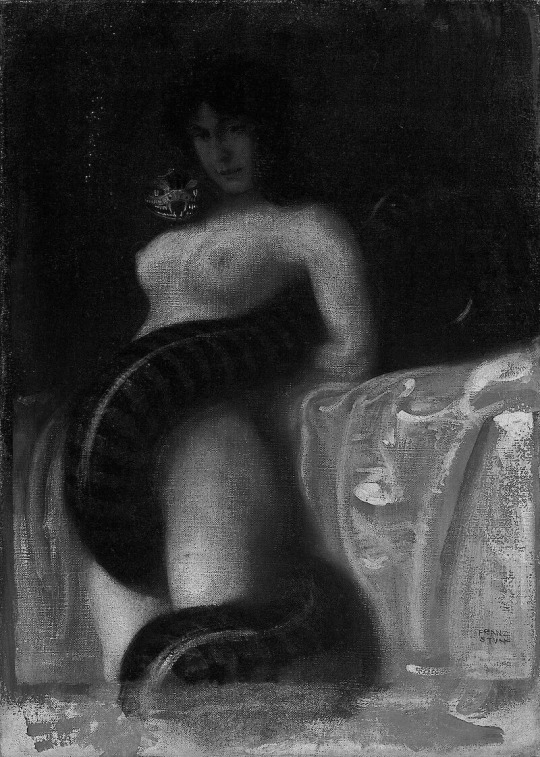
Since the 14th century, one woman has haunted the history of the Ottoman Empire and the very minds of their historians with her influence over a Sultan who suffered a hummiliating fate.
The only wife of a Sultan who has been the target of curses; Despina Hatun.
The reason for this great hatred of her has to do with the fact that she was influential and remain christian throughout her marriage. She was able to maitain the first and main place in the harem of her husband and to make him like her. A likeness that overtime grew into love and devotion.
Her wishes did not remain mere wishes, and for this reason the muslim associates of Sultan Yildirim Bayezid Han, as well as later Turksih historians resented her. Today most people remember her as “Bayezid’s great love”.
To Ottoman sources she was a fatal woman who lured their Sultan into sin. It can be concluded from that amount of hatred that she was allowed privileges and more power than was allowed for a foreign wife of a Sultan, or an imperial wife in general.
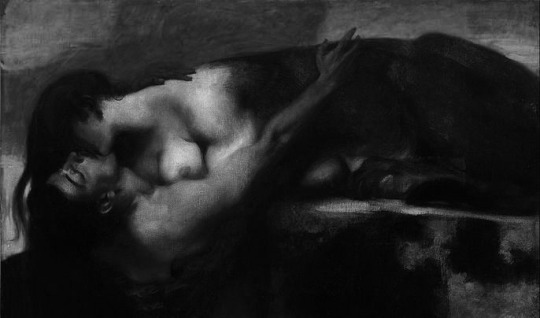
SHE MADE THE SULTAN FALL FOR HER
"As for Yıldırım, let's say that he fell in love with the princess." - Necdet Sakaoğlu. Bu Mülkün Kadın Sultanları, pg 83
"Throughout his life he was devoted to Despina, and his brother-in-law Stephen in turn was a devoted and steadfast friend." - Herbert Gibbons. The Foundation of the Ottoman Empire
According to Chalkokondyles, when Bayazit's favorite wife, Lazareva [daughter], whom he took everywhere with him into battle, was captured and handed over to Tamerlane, he ordered that wine be served to him there, in front of her husband. The enraged Bayazit told Tamerlane that what he was doing was not worthy of his father and mother. - Две српске султаније : Оливера Лазаревић (1373-1444), Мара Бранковић (1418-1487), pg 107
"When the latter's wife, the daughter of Lazar, whom he loved more than any of the others, had been taken away, and Timur was taking her around in the camp with him, he made her pour his wine in front of Bayezid, her husband." - Laonikos Chalkokondyles
"He kept her close – she accompanied him everywhere - he appeared unable to part from her. She was the one person, who influenced him most and was of course blamed by the Ottoman chroniclers for the fall of Beyazid’s empire into the hands of Timur. They considered the young sultan totally captivated by her."- Anna Buxton. The European Sultanas of the Ottoman Empire
It is widely understood that throughout their marriage Despina and Bayezid shared a devoted sentiment-perhaps more on his part-despite the circumstances that brought them together. The couple had similar interests such as politics, wine, partying, European customs, conversations and according to historians found constant erotic pleasure with each other. Though all of these cited interests might just be Ottoman historians attempts to depict this woman as deceitful.
" The sexually robust woman – she satisfies all his desires- but remains a Christian." - Richard Franz Kreutel performs a service to Ottoman polemic.
It is said that for some days, Bayezid remained in Despina's chamber and completely forgot about state affairs.
Olivera (Despina Hatun) is accused by Ottoman historians of using her charms and beauty to lure Bayezid to her. This seems highly untrue as Bayezid's harem is labeled as being filled with "forbidden beauties." He could have set his sight on another with more charm and beauty, and in fact he did, but still remained devoted to Despina.
It seems they use her beauty and political influence only as a means to label her as a Femme Fatale who is cunning, power-hungry and worst even, an infidel. Yet, when we look at foreign sources about the personality of Despina Hatun, she is describe as being gentle and flowery.

SHE WAS ALLOWED POLITICAL INFLUENCE
According to Dr. Zeljko Fajfric in his work "Srpske kraljice i princeze," released in 2007, no sultana before Olivera, who did not convert to Islam, managed to become so influential.
Yet something that is enough to critize him on is that he only puts this influence of hers to be due to her charms and beauty, yet again unintentionally labeling her as a femme fatale.
If beauty was all it took to have political influence, dozens more like her would have succeeded in that aspect, but she remains the only wife of Bayezid who had significant importance on politics.
Either Bayezid often sought after her opinion in matters of state or he took her as an advisor which might be the reason she was often with him, but no, a good scent, a soft spoken voice, long hair or enchanting glances will work, at least not for very long, even for a man prone to pleasure like Bayezi, and as we know Despina's political influence grew more with time than it decline.
A few things that are attributed to her council...
I: She helped accelerate the transfer of Prince Lazar's body back to Serbia.
II: She freed and paid ransoms for enslaved christians with the help of her brother; Stefan.

SHE BROUGHT DEBAUCHERY TO THE OTTOMAN COURT
Despina is often blamed for having introduced wine at the Ottoman court.
This sin that Bayezid's partook in can not be credited to Despina because he was already throwing such feasting assemblies ever since his princehood. Him and Despina married in 1390, he was well too familiar with wine and pleasure prior to their marriage.
Despina, later on, might have organized such festivities for him.
" Wine and kebab assembly was established. The infidel's daughter came and toasted Ali Pasha. The lady said, see the moment." - Aşıkpaşazade.
Still it is highly unlikely that Despina, who comes from a culture where married women do not speak in the presence of men would even partake in such assemblies filled with drunk men.
What is more likely is that she organized her own wine assemblies in the harem, with the presence of other women, but the chances of her doing such a thing as drinking in the presence of men is highly unlikely.
She might have even brought wine and so called debauchery to the once "pious" court of the harem, but as for the men; who take up the majority parties in politics and war, they were already familiar with the beverage.
#Bayezid The Thunderbolt#Olivera Despina Hatun#medieval#middle ages#Ottoman#Lazarevic Dynasty#Ottoman Dynasty#yildirim bayezid#15th century#16th century#Lazarevic dynasty#The Sins of DESPINA HATUN
304 notes
·
View notes
Text
Master Post - N to Z
If you notice any show, movie or character missing that I’ve made gifs of, please let me know. Characters are sorted alphabetically by first their last name and then their first name.
Go to A-M | Last updated: January 3rd, 2025
N
Nussknacker und Mausekönig (Louise Stahlbaum | Marie Stahlbaum | Zuckerfee/Sugar Fairy)
O
Oktoberfest 1900/Oktoberfest: Beer & Blood (Clara Prank | Curt Prank)
Once Upon A Time (Belle French | Colette French | Cora Mills | Ella Mills | Regina Mills / The Evil Queen | Robin Mills | Emma Swan | Anastasia Tremaine | Drizella Tremaine)
Once Upon A Time in Wonderland (Alice | Cora Mills | Anastasia Tremaine)
Outlander (Abigail | Marie Louise de La Tour d'Auvergne | Jocasta Cameron | Margaret Campbell | Geilis Duncan | Geneva Dunsany | Isobel Dunsany | Madame Elise | Brianna Fraser | Claire Fraser | Jamie Fraser | Janet “Jenny” Fraser Murray | Harold “Hal” Grey | John Grey | Lady Grozier | Mary Hawkins | Jeanne LeGrand | Louis XV | Mairi | Laoghaire MacKenzie | Letitia MacKenzie | Joan MacKimmie | Marsali MacKimmie | Mary MacNab | Elias Pound | Alexander Randall | William Ransom | Charles Edward Stuart | Suzette | Margaret Wake Tryon | Martha Washington | Elizabeth “Lizzie” Wemyss | Extras)
Oz the Great and Powerful (Evanora | Glinda | Theodora)
P
Q
Queen Charlotte: A Bridgerton Story (Agatha Danbury | Queen Charlotte | Violet Ledger | Wolfgang Amadeus Mozart | Princess Charlotte of Wales)
R
Reign (Aylee | Kenna de Poitiers | Amy Dudley | Robert Dudley | Claude of France | Greer Norwood | Penelope | Mary Stuart, Queen of Scots | Elizabeth Tudor/Elizabeth I | Elisabeth of Valois)
Reinas/Queens: The Virgin and the Martyr (Joanna of Austria | Empress Maria / Maria of Austria | Margaret Douglas | Bess of Hardwick | Isabel de Osorio | Mary Stuart, Queen of Scots | Isabella Clara Eugenia of Spain | Anna Throndsen | Elizabeth I/Elizabeth Tudor | Elisabeth of Valois)
Rise of Empires: Ottoman (Katarina Branković | Mara Branković | Gülbahar Hatun | Hüma Hatun | Constantine XI Palaiologos)
Romeo & Juliet [2013] (Juliet Capulet)
S
Sechs auf einen Streich (see the individual movies)
Shadow and Bone (Tatiana Lantsov | Zoya Nazyalensky | Genya Safin | Alina Starkov)
Sisi [2009] (Elisabeth “Sisi” of Austria | Archduchess Sophie of Austria | Helene “Néné” in Bavaria | Charlotte of Belgium | Eugénie de Montijo)
Sisi [2021] (Elisabeth “Sisi” of Austria | Archduchess Sophie of Austria | Helene “Néné” in Bavaria | Karl Ludwig von Grünne | Eugénie de Montijo)
Sissi Trilogy (Elisabeth “Sisi” of Austria | Archduchess Sophie of Austria | Helene “Néné” in Bavaria | Ludovika, The Duchess in Bavaria)
Snow White and the Huntsman (Ravenna)
Sophie - Braut wider Willen (Sophie von Ahlen)
Still Star-Crossed (Guiliana Capulet | Juliet Capulet | Rosaline Capulet | Tessa Montague | Princess Isabella of Verona)
T
The 100 (Emori | Clarke Griffin | Lexa)
The Age of Adaline (Adaline Bowman)
The Duchess (Georgiana Cavendish, Duchess of Devonshire)
The Last Duel (Marguerite de Carrouges | Jacques Le Gris)
The Little Mermaid [2023] (Vanessa)
The Crown (Catherine Middleton | Queen Elizabeth II | Princess Margaret)
The Empress (see Die Kaiserin)
The Eras Tour (Taylor Swift)
The Gilded Age (Mamie Fish | Bertha Russell | Peggy Scott | Extras)
The Great (Countess Belanova | Catherine the Great | Georgina Dymova | Marial | Queen Agnes of Sweden | Extras)
The Greatest Showman (Jenny Lind)
The Hunger Games Trilogy (Katniss Everdeen | Peeta Mellark | Johanna Mason | Finnick Odair | Coriolanus Snow)
The Hunger Games: A Ballad of Songbirds and Snakes (Lucy Gray Baird | Livia Cardew | Arachne Crane | Clemensia Dovecote | Palmyra Monty | Iphigenia Moss | Juno Phipps | Persephone Price | Diana Ring | Vipsania Sickle | Tigris Snow | Lysistrata Vickers)
The Huntsman: Winter’s War (Freya | Ravenna)
The Originals (Davina Claire | Hayley Marshall | Aurora de Martel | Freya Mikaelson | Hope Mikaelson | Keelin Mikaelson | Rebekah Mikaelson)
The Other Boleyn Girl 2008 (Anne Boleyn | Elizabeth Boleyn (née Howard) | Mary Boleyn)
The Pillars of the Earth (Empress Matilda)
The Princess Switch (Margaret Delacourt | Fiona Pembroke)
The Royals (Princess Eleanor Henstridge | Queen Helena Henstridge | Wilhelmina “Willow” Moreno)
The Scandalous Lady W (Seymour Fleming)
The School for Good and Evil (Emma Anemone | Clarissa Dovey | Leonora Lesso)
The Serpent Queen (Catherine de Medici | Diane de Poitiers | Mary Stuart, Queen of Scots)
The Spanish Princess (Catherine of Aragon | Henry VIII | Mary Tudor)
The Tudors (Catherine of Aragon | Bessie Blount | Anne Boleyn | Anne of Cleves | Katheryn Howard | Ursula Misseldon | Kathryn Parr | Jane Seymour | Elizabeth Tudor/Elizabeth I | Margaret Tudor | Mary Tudor/Mary I)
The Twilight Saga (Charlotte | Alice Cullen | Edward Cullen | Katrina “Kate” Denali | Jasper Hale | Rosalie Hale | Peter | Bella Swan | Caius Volturi | Demetri Volturi | Jane Volturi)
The Vampire Diaries (Bonnie Benett | Caroline Forbes | Elena Gilbert | Jo Laughlin | Rebekah Mikaelson | Katherine Pierce | Annabelle “Anna” Zhu | Pearl Zhu)
The White Queen (Anne Neville | Isabel Neville | Margaret Plantagenet | Bona of Savoy | Elizabeth “Jane” Shore | Elizabeth Woodville | Cecily of York | Elizabeth of York | Margaret of York)
The White Princess (Mary of Burgundy | Cecily Neville | Eliza de la Pole | Margaret Pole | George Stanley | Jasper Tudor | Cecily of York | Elizabeth of York | Margaret of York)
The Witcher (Calanthe of Cintra | Pavetta of Cintra | Tissaia de Vries | Philippa Eilhart | Sabrina Glevissig | Margarita Laux-Antille | Triss Merigold | Keira Metz | Lydia van Bredevoort | Yennefer of Vengerberg)
The Young Victoria (Victoria, The Duchess of Kent (née of Saxe-Coburg-Saalfeld) | Prince Albert of Saxe-Coburg and Gotha | Adelaide of Saxe-Meiningen | Queen Victoria)
Three Thousand Years of Longing (Hürrem Sultan | Kösem Sultan)
Trenck - Zwei Herzen gegen die Krone (Anna Amalia of Prussia)
Tulip Fever (Mrs Overalt | Sophia Sandvoort | Mrs Steen)
Tut (Ankhesenamun)
U
V
Vampire Academy [2022] (Vasilisa “Lissa” Dragomir)
Victoria (Queen Victoria | Victoria, Princess Royal)
Vom Reich zur Republik (Victoria, Princess Royal)
W
War & Peace [2016] (Natasha Rostova)
What We Do In The Shadows (Marwa | Nadja of Antipaxos)
Wolf Hall (Anne Boleyn | Catherine of Aragon)
X
Y
Z
13 notes
·
View notes
Note
hello! i keep seeing times from times the claim of "alexias hatun" daughter of david of trebizond as consort of mehmed ii but i have yet to find her in any credible places (though i will admit i have not read much on the ladies) is she maybe a confusion with anna hatun/maria gattilusio? thank you <3
Hi! As I had never heard about her before, I searched her on google and found that the source of this claim is this "essay" (it's three pages)
(By the way, creating a Wikipedia page sustained only by that source, which is dubious, is against the rules of the website and it should be taken down. Wikipedia usually doesn't accept such weak sources but I understand that moderating that website is a huuuuge task)
Now, I don't want to discredit the author but this is not the first time I have encountered her and her claims are quite creative. Also, I appreciate the sources at the bottom but they're so vague you'd have to spend weeks verifying every single claim she made in those two pages. Like, she just listed archives? Not even which part of those archives or which papers.
Arşivler: - Başbakanlık Osmanlı Arşivi, İstanbul - Topkapı Sarayı Arşivi, İstanbul - Venedik Arşivi, Venedik - İtalya Devlet Arşivi, Roma - Avusturya Devlet Arşivi, Viyana - Sırbistan Devlet Arşivi, Belgrad - Macaristan Devlet Arşivi, Budapeşte - İspanya Devlet Arşivi, Madrid - Hırvatistan Devlet Arşivi, Rijek
This paper wouldn't get past peer reviews. Hell, it wouldn't even be accepted as homework. If I listed my sources like this, my supervisor would burn me alive.
So... yeah...
I'd stay dubious if I were you.
6 notes
·
View notes
Text
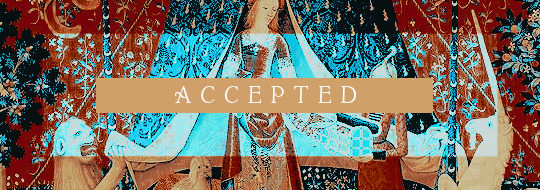
‘ 𝚃𝙷𝙰𝚃 𝙵𝙰𝙲𝙴 𝙾𝙵 𝚈𝙾𝚄𝚁𝚂 𝙸 𝙳𝙾 𝚁𝙴𝙼𝙴𝙼𝙱𝙴𝚁 𝚆𝙴𝙻𝙻 … ’ WELCOME TO FORTUNE'S WHEEL! the following roles and faceclaims have been accepted. please send in your account within forty-eight (48) hours to avoid your role being re-opened.
aaron cobham as felipe of spain. alessandra mastronardi as marie de guise. alessandro fella as henry of england. alperen duymaz as iskender sultan. aure atika as isabella of anjou. berk cankat as dragut. burak özçivit as sultan selim. fahriye evcen as gülsah sultan. gong jun as hans of denmark. gong li as empress xiaojing. john boyega as philip of austria. john david washington as emperor maximilian. lashana lynch as eleanor of portugal. leyla feray as gevherhan sultan. marina moschen as sophia of byzantium. mark rowley as edward of york. marlon teixeira as emperor theodore. matilda de angelis as katherine plantagenet. max irons as prince louis, duke of normandy. medalion rahimi as anna of france. merve boluğur as hurrem hatun. paul mescal as george of york. rebecca ferguson as alienor of aquitaine. rose williams as margaret plantagenet. sai bennett as anne of york. shannyn sossamon as matilda of flanders. trisha krishnan as damiata.
3 notes
·
View notes
Photo
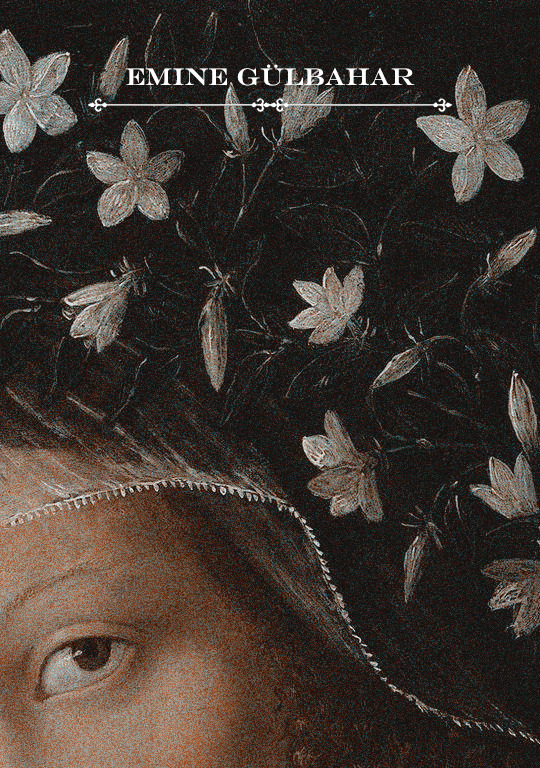
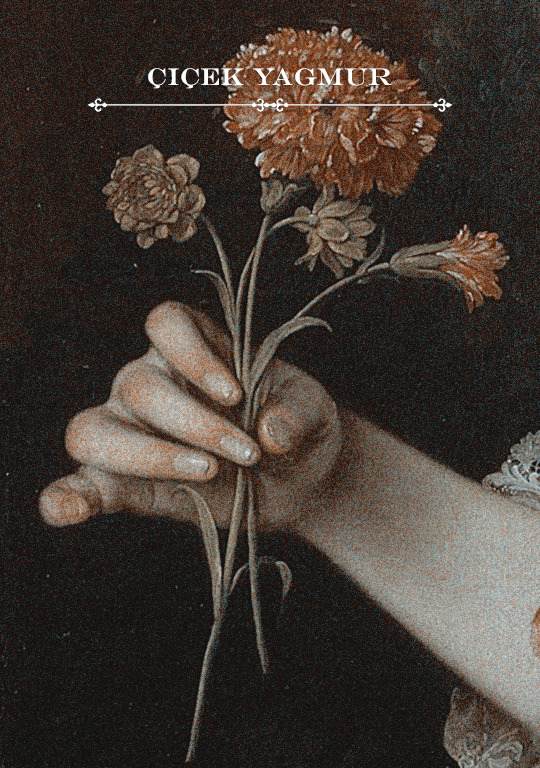

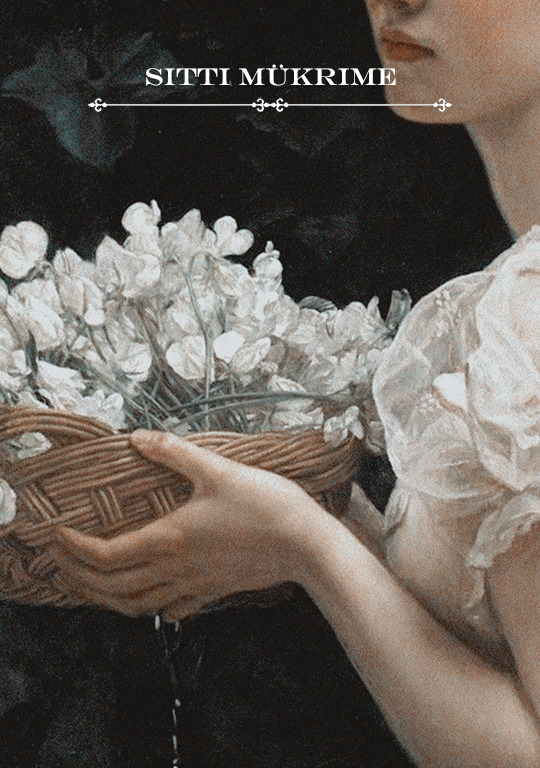
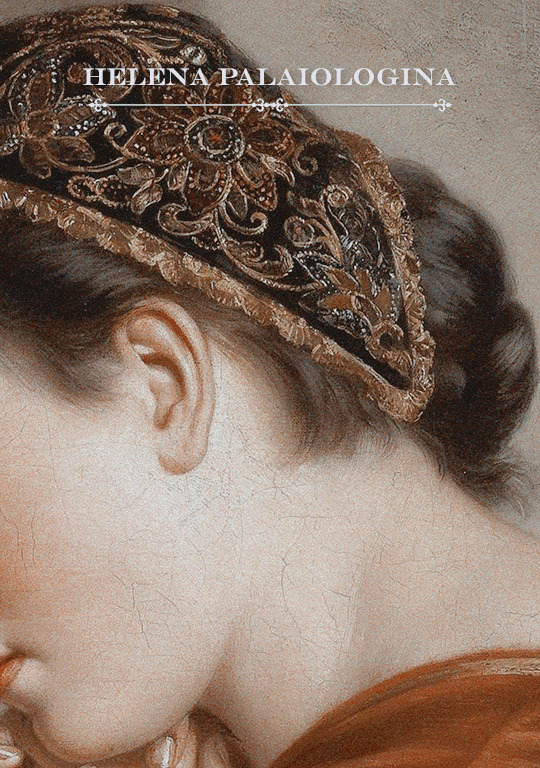


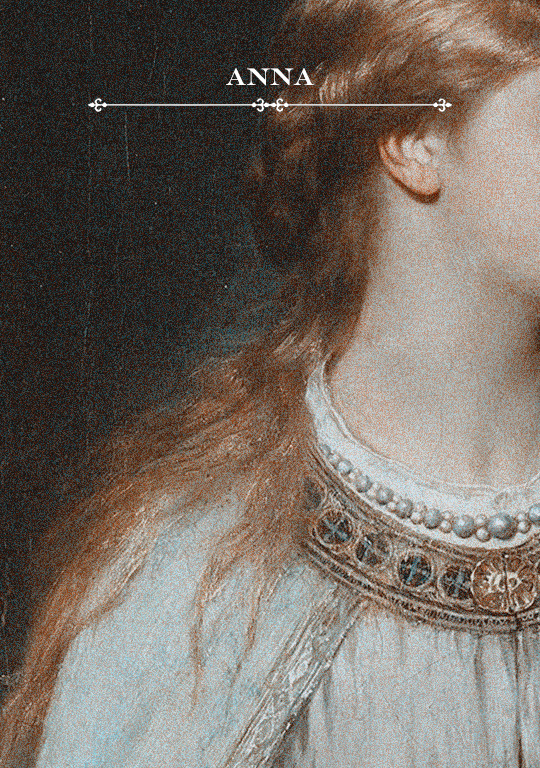
Mehmed II Conqueror + consorts (pictures are for aesthetic)
Emine Gülbahar Hatun — was a favourite consort of Sultan Mehmed II. In most sources she is referred as non-muslim slave who was converted to Islam after her arrival to the harem. There is no agreement on her origins some historians think she was Pontic Greek, Albanian or lowly Slavic. She was the mother of the future Sultan Bayezid II and Gevherhan Hatun. She died circa 1492 and was buried in her mausoleum inside the Fatih Mosque next to her late husband.
Çiçek Yagmur Hatun — was a wife or consort of Sultan Mehmed II. According to some sources she could have been Turkish noblewoman or Serbian, Greek, Venetian, French slave. She entered the harem or married Mehmed at Constantinople and gave birth to her only son Şehzade Cem (Ottoman claimant Sultan) on 22 December 1459. It is not known the degree of influence she had during Mehmed’s reign or if she even was favoured by him. She died on 3 May 1498 of plague and was buried in Cairo.
Hatice Hatun — was a thrid legal wife of Sultan Mehmed II. She was a possible daughter of Zaganos Mehmed Pasha. In 1463 she became Mehmed's third legal wife. After her husband death she remarried with a statesman.
Sitti Mükrime Hatun — was a Turkish Princess and first legal wife of Sultan Mehmed II. Her father was Süleyman Bey the sixth ruler of Dulkadir State. When Mehmed turned seventeen he married her for political purposes. Her possible offspring is unknown. Due to her middle name Sittişah is sometimes confused with Gülbahar Mükrime Hatun another consort of Mehmed. She died in September 1486 and was buried in a mausoleum built inside her mosque.
Helena Palaiologina — was a possible wife of Sultan Mehmed II. Her entering the Sultan's harem is controversial and remain unconfirmed. She was a daughter of the Despot of Morea Demetrios Paleologos the brother of Constantine XI Palaiologos the final Byzantine emperor and Theodora Asanina the daughter of Paul Asan. Some rumors says Mehmed II asked for her after his campaign in Morea having heard of her beauty. Probably he never bedded with her because he was afraid she would poison him. In another case Helena was provided with a pension and large estate at Adrianople by the Sultan though she was forbidden to marry. She died of unknown causes in 1469 or 1470 in Edirne.
Gülşah Hatun — was a second legal wife or consort of Sultan Mehmed II. There is no informations about her origins. She married Mehmed or entered his harem in 1449 when he was still a Prince and the governor of Manisa. Shortly before Murad’s II death she gave a birth to her only son Şehzade Mustafa and followed him to Konya when he became governor of the province. She died circa 1487 and was buried in Bursa in the tomb she had built for herself near that of Mustafa.
Maria Hatun — was a consort of Sultan Mehmed II. Before she entered Mehmed’s harem she was a widow of Alexander Komnenos Asen. According to some sources she was judicated as the most beautiful woman of her age. Some historians claims she could be more likely Murad’s II concubine than Mehmed’s.
Anna Hatun — was a consort of Sultan Mehmed II. Her parents were Trabzon Greek emperor David Komnenos and Helena Kantakuzenos. The marriage was initially proposed by her father, but Mehmed refused. Nontheless when Trabzon was taken in 1461 Anna entered the harem and stayed there for two years after which Mehmed married her off to Zaganos Mehmed Pasha.
#ottoman history#mehmed ii#consort#gulbahar hatun#cicek hatun#helena hatun#hatice hatun#maria hatun#sitti hatun#anna hatun#ottoman empire#aestehtic#history#historyedit#sultanate#wives#myedit#ottoman ladies
122 notes
·
View notes
Photo
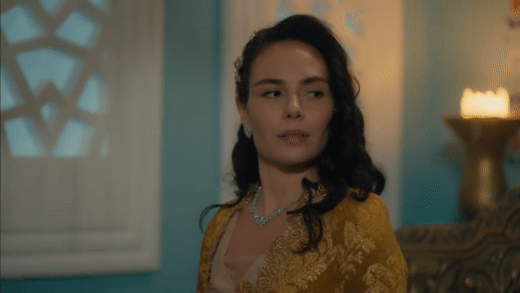


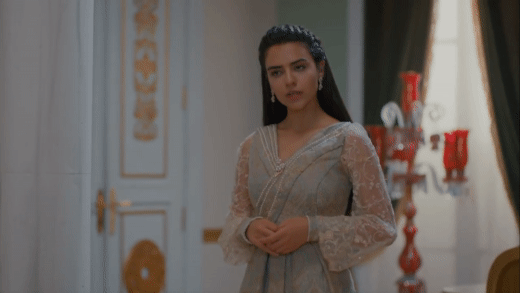
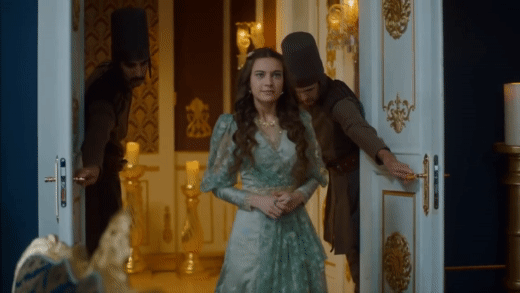

Women from Kalbimin Sultani (Sultan of my Heart) that induce bi panic:
1. Açelya Devrim Yılhan as Asubcan Kadin
2. Aleksandra Nikiforova as Anna Petrovna
3. Sevda Erginci as Ayperi Hatun
4. Aslihan Malbora as Saliha Sultan
5. Gamze Doganoglu as Gulfidan Sultan
6. Beste Kokdemir as Hosyar Kadin
#açelya devrim yılhan#gamze doganoglu#beste kokdemir#sevda erginci#aslihan malbora#asubcan kadin#asubcan sultan#hosyar kadin#hosyar sultan#Ayperi Hatun#gulfidan sultan#saliha sultan#Anna Petrovna#Anna Petrovna Hatun#Anna Hatun#kalbimin sultani#sultan of my heart#bi panic#period drama#Pretty Girls#pretty women#not in any particular order#not even all of them
33 notes
·
View notes
Photo

Family of Mehed II.
#mehmed ii#gülbahar hatun#gülbahar#gulbahar#sitti mükrime hatun#sitti mükrime#mükrime#sitti#sitti mukrime hatun#çiçek hatun#çiçek#cicek hatun#gülşah hatun#gülşah#gulsah#gulshah#anna hatun#helena hatun#hatice hatun#gevherhan hatun#gevherhan#bayezid ii#mustafa#cem#sultan cem
25 notes
·
View notes
Photo










Muhteşem Yüzyıl: Kösem Season 1 + Women Caring About Each Other, Part 1 (Parts 2)
#kosemedit#magnificent century kosem#Kösem Sultan#Muhteşem Yüzyıl Kösem#Magnificent Century: Kösem#perioddramaedit#mck#mc: kosem#my: kosem#muhtesem yuzyil kosem#weloveperioddrama#period drama#historical drama#KosemPlus#HistoricalDramasPlus#The Lion the Wolf and the Lamb#Signs and Miracles#On the Edge of Extinction#Anna Hatun#kosem sultan#Golge Hatun#Handan Sultan#Dilruba Sultan#Awkward-Sultana
45 notes
·
View notes
Photo








She’s no teacher, she’s just a clown.
#kalbimin sultanı#kalbiminsultaniedit#perioddramaedit#anna petrovna#mahmud ii#Namik Pasa#Ayperi Hatun#S1E02 Kalbimin Sultani#my edits
245 notes
·
View notes
Text






This kaftan was first worn by Huricihan Sultan in the eighth episode of the third season of Magnificent Century. It makes another appearance in the thirty-ninth episode of the same season on Şehzade Cihangir. The kaftan is worn twice in the fourth season, first by Anna Hatun in the thirty-first episode and then by Mihrimah Sultan's son Osman in the final episode.
Magnificent Century: Kösem uses the kaftan twice. It is worn by Şehzade Murad (later Sultan Murad IV) in the twenty-sixth episode of the first season and by Şehzade Süleyman (later Sultan Süleyman II) in the twenty-ninth episode of the second season.
#Muhteşem Yüzyıl#Muhteşem Yüzyıl: Kösem#Magnificent Century#Magnificent Century Kösem#Magnificent Century Kosem#period drama#costume drama#historical drama#Huricihan Sultan#Şehzade Cihangir#Sehzade Cihangir#Anna Hatun#Sultanzade Osman#Sultanzade Osman (Son of Mihrimah)#Şehzade Murad#Sehzade Murad#Şehzade Murad (Son of Kösem)#Murad IV#Şehzade Süleyman#Sehzade Suleyman#Şehzade Süleyman (Son of Dilaşub)#Süleyman II#reused costumes#recycled costumes
13 notes
·
View notes
Text
THE FORTUNE OF THREE
Angelina of Greece
Angelina was a slave in the harem of Sultan Bayezid I who would be recaptured by the Timurids to be later sent to the King of Castile as a “gift”.
It is speculated that she was born around 1380 as she was described as still being young in 1402, however, no exact date is proven to be correct.

Early Life
Nothing is known about the early life of this lady. However, she was likely of Greek origin, given that in Castille, she was referred to as “Angelina de Grecia,” and most historians agree that she was of Greek origin.
Some historians propose that she was the daughter of John V Paleologus and married Bayezid in 1372. However, since she is not mentioned in any Byzantine documents of that time and was sent to Spain where she remained permanently without any connection to the Royal Byzantine family, it is highly unlikely that she is the daughter of John.
Other accounts, and Angelina herself (through her tomb), claim that she is the daughter of a certain Count John/Ivan of Hungary, Duke of Slavonia/Dalmatia, the alleged illegitimate son of an unnamed King of Hungary. However, the lack of information about Count John/Ivan, if he ever existed, suggests that this might have been a plot created by the King of Castille to find noblemen for her to marry, a plot in which Angelina herself participated.
There was no Count/Duke of Slavonia by that name at the time that I could find information on. He was likely invented for higher chances of matchmaking purposes, as likely, Angelina was of humble origin before becoming a slave, and nobility typically preferred to marry within their own class.
First Capture
Some speculate that she was captured in the aftermath of the Battle of Nicopolis in 1396, in case it is true she would have been around 16 years old. This speculation is linked to the belief that she was Hungarian, though it is more probable that she was not.
Other sources believe she was captured around 1391 in Thessalonica. In that case, she would have been around 11 years old, slightly older than the preferred age for girls to be educated as potential concubines but not uncommon.
Life In The Harem
Despite being sold as a slave in the imperial palace of Sultan Bayezid I, Angelina seems to have been one of the few Christian slaves in the palace. Timur later sent her as a “gift” to Henry III of Castille, and as we know Muslim women are not permitted to engage with men of other faiths.
Another indication of her faith is found in a past edition of Clavijo’s work.
“Argote de Molina (the editor of Clavijo) in the Discurso, which he prefixed to the Edition Princeps of 1582, states that with the presents of jewels, Timur sent to King Henry two Christian maidens.” - Embassy to Tamerlane/ 1403-1406 (Broadway Travellers) Volume 24, pg 178. (Angelina was one of the mentioned maidens.)
Considering her religion, it is safe to assume she was never considered a potential concubine for Bayezid, as all concubines of the Sultan had to be Muslims. She was more likely working as a servant under a higher-ranking slave or one of Bayezid’s Christian wives (Macedonian Princess, Byzantine princess, or Olivera Lazarevic).
Despina Hatun (Olivera Lazarevic) was captured alongside her daughters and Christian servants.
“When he was in Kütahya, Timur sent for Olivera Despina, her daughters, and her household, alongside the daughter of the ruler of Karaman [Jalayirid Sultanate], whom Beyazid was planning to marry off to his son Mustafa. They were brought to his camp with many servants, musicians, and dancers. He suggested that the Princess and other members of her household, who were still Christian, should embrace Islam. Despite her daughters being Muslim, Olivera declined this offer.” - Buxton, Anna. The European Sultanas of the Ottoman Empire - color edition. Kindle Edition.
If she was one of Olivera’s Christian servants, that would explain why she remained a Christian despite serving in the Imperial palace. Christian wives of early Ottoman Sultans are speculated to have freed slaves or, at the very least prevented forced Islamization.
Second Capture
In the aftermath of the Battle of Ankara in 1402, Timur sent his soldiers to plunder Bursa, resulting in the capture of the imperial treasure and slaves. It is conceivable that Angelina was among those captured.
Alternatively, she may not have been taken from Bursa but in a residence in Yenisehir where Olivera Lazarevic, her daughters, and servants resided.
After her capture, she was sent to Emir Timur's camp, where she remained for a period before being presented as a "gift" to King Henry III of Castile. At that time, Timur had received an embassy from the King of Castile, led by Don Payo Gonzalez de Sotomayor and Don Hernan Sanchez de Palazuelos, and upon their departure, he decided to send them off with Christian maidens to be given to Henry III of Castile. Both of these noblemen eventually married the other maidens who accompanied Angelina.
Arrival In Castile
Upon her arrival in Castile in 1403, while passing through Seville, Angelina caught the attention of a Genoese poet named Francisco Imperial, who was residing in the same city at the time. He composed a poem dedicated to her, which has survived to this day. From his poem, it can be inferred that Angelina was a woman of great beauty who captivated those around her as she traveled through Castile.
Upon reaching the Alcazar of Segovia, where King Henry was residing, the king, moved by pity for her and her entourage, took them under his protection.
Marriage To Don Diego González de Contreras
Around 1403, she married Don Diego González de Contreras, a knight and nobleman in the court of Henry. It is believed that the marriage was arranged by Henry, who likely sponsored the maidens' stay at court and their dowries.
Angelina, renowned for her beauty, likely had several suitors vying for her hand, but Don Diego, Lord of the house of Contreras, was ultimately chosen as the most suitable candidate by the King.
Diego is thought to have been well in his 70s at the time of his death in 1437, making him around 36 to 45 years old at the time of his marriage to the 22/23 years old Angelina.
The noble couple later took up residence in the Contreras’ ancestral home in the parish of San Juan de los Caballeros, Segovia, where Diego held the position of perpetual Regidor of Segovia, a hereditary title that would later pass to his son.
The couple welcomed two sons together, Fernán Gronzález de Contreras, who would later succeed his father as Regidor of Segovia, Juan González de Contreras, and possibly a daughter, Doña Isabel González de Contreras.

Later Life
Angelina likely led a noble and tranquil life as the wife of a nobleman in her husband’s ancestral home, where she also cared for her children.
It is believed that she passed away sometime after her husband died in 1437. However, historians have not been able to conclusively prove this theory. What is known is that she was certainly laid to rest in Segovia, where her body was buried in the church of San Juan.
The inscription on her tomb read as follows:
"Here lies the honored Dona Angelina of Greece, daughter of Count Ivan and granddaughter of the King of Hungary, wife of Diego González de Contreras."
Unfortunately, the church was later ruined, and her remains were transported to the neighboring church of San Pablo.

Legacy
Her grandson Rodrigo de Contreras (through Fernan) mentioned her in his will, written sometime in the late 15th to 16th century.
The will read as follows:
"When our Lord Jesus Christ pleases to take me from this present life, may my body be buried in the church of San Juan beside the grave of my grandmother Doña Angelina de Grecia. May God help us."
Her descendant Juan de Contreras, Marquis of Lozoya, later wrote a biography of her life in the 20th century.
Issue
Don Fernan Gonzalez de Contreras
Juan González de Contreras
Dona Isabel de Contreras (possibly)
Summary
Despite the turbulent period Angelina lived through, from being a simple girl of Greek parentage captured and enslaved in the Ottoman imperial palace to being "gifted" to the King of Castile by her second captor, Angelina was fortunate enough to have found a life of nobility and a family to care for.
Poem By Francisco Imperial Dedicated to Angelina:
"With great tranquility and meekness, beauty and sweet air, honesty and without custom, of elegance and mischief from the lands of Cayre I saw bring to the King of Spain with a very strange height delicate and graceful demeanor. Whether she be Tartar or Greek, as soon as I could see her her disposition does not deny to be of a grand name. She must undoubtedly be a woman of high birth placed in great tribulation, deprived of great power. Her countenance seemed to say 'Alas, captive am I, it is fitting from now on that I live in servitude Oh, elusive fortune! Alas, why was I born! Tell me, what did I deserve for you to make me live! My Greece, my Cardíamo Oh my sweet Angelina! beloved land that I cherish so much where such plunder is born Who separated me so quickly from you and your dominion and brought me to the great river where the sun rises and sets?"
(Sources: "Embassy to Tamerlane/ 1403-1406 (Broadway Travellers) Volume 24", Buxton, Anna. "The European Sultanas of the Ottoman Empire", "Dona Angelina de Grecia: ensayo biografico".)
#fortuneofthree#medieval#angelinaofgreece#angelinadegrecia#ottoman empire#angelina of greece#medieval history#battle of ankara#Francisco Imperial#historical women#THE FORTUNE OF THREE
52 notes
·
View notes
Photo

Yakup Record im KEK 2 GO Buch!
2 notes
·
View notes
Photo




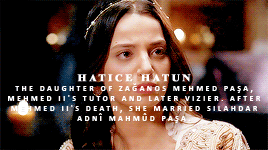



𝙤𝙩𝙩𝙤𝙢𝙖𝙣 𝙘𝙤𝙣𝙨𝙤𝙧𝙩𝙨 : Mehmed II
#history#historyedit#ottoman history#gulbahar hatun#cicek hatun#sitti mukrime hatun#gulsah hatun#anna hatun#hatice hatun#helena hatun#maria gattilusio#*consorts
159 notes
·
View notes
Text
27.7.2013
Näin unen useammassa osassa. Ensimmäisessä osassa oli haastattelu televisiota varten. Kyseessä oli jotkut tunnetut henkilöt, joista toinen oli ehkä Anna Eriksson. Haastattelija tuskasteli haastateltavien käytöstä, ja koitti saada juttua aikaan. Minulla oli jostain syystä huumeita mukanani ja tarjosin näitä heille. He ottivat ne vastaan hyvin ja siirryimme makoilemaan sohvalle.
Toisessa osassa muistan äidin ja J:n. Joku muukin oli samassa tilassa. Tein jotain, ja J meni tapansa mukaisille päiväunille. Nyt kuitenkin yritin auttaa J:a irtaantumaan huumeista. Äidille en kertonut mitään, vaikka hän epäilikin jotain. Hän tuli nyrpeänä puhuttelemaan minua.
Kolmannessa olin luvannut tavata K:n, S:n ja muut. S oli ostanut repun ja olin itse ostanut hatun. Repun myyjä tuli ulkona pitämään myyntipuhetta ympärilläni olijoille. Lähdin takaisin sisään taloon josta he tulivat. Sisällä näen P:n ja jonkun toisen. P:n ilme ei ole kauhean iloinen. Menen hänen luokseen ja suutelen häntä kämmenelle.
0 notes
Photo






Fictional couples in period dramas part 2-
1. Anna (Petrovna) Hatun + Mahmud II- Kalbimin Sultani
2. Defne Sultan + Sehzade Bayezid- Muhtesem Yuzyil
3. Merlin + Freya- Merlin
4. Lee Hwon + Yeon Woo- Moon Embracing the Sun
5. Mary I + Phillip, Duke of Bavaria- The Tudors
6. Firuze (Humeyra) Hatun + Suleyman the Magnificent- Muhtesem Yuzyil
#kalbimin sultani#sultan of my heart#muhteşem yüzyıl#merlin#bbc merlin#moon embracing the sun#The Tudors#anna hatun#Anna Petrovna#Anna Petrovna Hatun#magnificent century#defne sultan#sehzade bayezid#lee hwon#yeon woo#Mary I Of England#mary i#phillip duke of bavaria#firuze hatun#humeyra hatun#suleyman the magnificent#Suleyman I#sultan suleyman#fictional characters#fictional couples#period drama#historical drama
32 notes
·
View notes